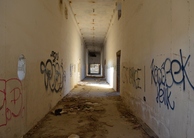Statutory Rape and Teen "Sexting" Laws: The Consequences of Poorly Crafted Legislation
By
2015, Vol. 7 No. 04 | pg. 2/2 | « Phillip Alpert, an eighteen-year-old high school student angry after an argument with his sixteen-year-old girlfriend, emailed nude pictures to her entire contact list. Due to his age, he was charged with possession and distribution of child pornography. His impulsive action as a newly minted ‘adult’ will continue to cost him the punishment of registering as a sex offender until he is 43 years old (Cornwell, 2013). The legislation utilized to convict and label Alpert as a sex offender was overly broad. Both Virginia and Florida law, was at the time, written so that any “person” who is in possession of child pornography is guilty of the offense and punishable (Cornwell, 2013). Persons can include minors in a relationship who send sexually explicit or even sexually suggestive pictures of themselves (not to third parties) to each other. Are child pornography charges the appropriate punishment for adolescent sexting? Within the last eighteen months, many states have begun to introduce legislation that accommodates the technological changes that are occurring within adolescent society. Florida is such a state. The same state that convicted Alpert of possessing and distributing child pornography has revisited their laws on sexting. Presently in Florida sexting by a minor is a misdemeanor punishable by a $60 fine for a first offense (847.0141). Following their lead, 26 states have introduced legislation, since 2009, to help alleviate the use of child pornography laws in cases of adolescent sexting (Kirsch, 2013). However, prior to this legislation there existed a period of several years in which adolescents caught sexting faced conviction traditional child pornography statutes. This lack of relevant legislation still exists in several states, placing adolescent residents at risk for serious punishment should they follow the cues of their peers. I am swayed to believe that sexting charges need to be dealt with by the juvenile court system. Traditional child pornography laws are not intended to ensnare minors, but rather adult predators. Using this type of law ironically punishes the very people it was created to protect by labeling them a member of the very group they should be protected from. Barry (2010) recognizes the paradox adolescents are in by stating “the teen depicted suffers the harm when they in fact are the ones facing prosecution.” The Consequences of Poorly Crafted LegislationEarning a label as a sex offender, regardless of the way in which the label is received, carries a lifelong stigma. After a period of incarceration, sex offenders face many more consequences upon their release. Depending upon jurisdiction and stipulations of sentencing, a sex offender often must register at their local supervising body. This includes, of course, paying a fine or fee and having up-to-date identification cards and contact information. This registration is published, usually online, and becomes a vehicle of constant public humiliation. Obtaining suitable housing that meets all requirements and exclusions outlined in the offender’s registration guidelines becomes a bigger chore than most can imagine. Registered sex offenders are often prohibited from living in a nearby radius of places that “children congregate.” These places can include playgrounds, schools, churches, bus stops, community centers, and more. In addition to a serious ban on housing choices, there are also limited employment options for felons. Consider the job prospects of an adolescent convicted of statutory rape and made to register as a sex offender. Should a job come available for which our under-educated applicant is qualified, there is the problem of “checking the box.” This phrase refers to the wording that is present on many job applications that explicitly asks whether or not the applicant has ever been convicted or charged with a crime. Beck and Boys (2013) summarized the long-term consequences sex offenders face on a daily basis: “having a record... has a negative impact on educational, employment, and housing opportunities.” While the majority of this analysis has focused on the offender, we also should not discount the experiences of real victims that have suffered real harms. The goal of this paper is not to question the plight of survivors of sexual abuse or rape. Statutory rape is a serious offense and not something that should be trivialized. One of the problems of poorly conceived legislation is, in this case, that many 'victims' of statutory rape do not view themselves as victims when they feel they participated in a consensual act. As a result, the plight of true victims can be drowned out by victims of poorly crafted legislation. ReferencesBarry, J. (2010). Child as victim and perpetrator: laws punishing juvenile sexting. Vanderbilt Journal of Entertainment and Technology Law, 13(1) 129-154. Accessed January 21, 2015. Beck, V. S., & Boys, S. (2013). Romeo & Juliet: Star-crossed lovers or sex offenders? Criminal Justice Policy Review, 655-675. Accessed January 22, 2015. doi:10.1177/0887403412458795 Cocca, C. E. (2002). From "welfare queen" to "exploited teen": Welfare dependency, statutory rape, and moral panic. NWSA Journal, 14(2), 56-79. Retrieved from http://login.ezproxy1.lib.asu.edu/login?url=http://search.proquest.com/docview/60082992?accountid=4485 Cornwell, J. (2013). Sexting: 21st Century Statutory Rape. In SMU Law Review (Vol. 66, pp. 111-156). Dallas, TX: Southern Methodist University & Dedman School of Law. FL, 847.0141, (2014). Goodwin, M. (2013). Law’s Limits: Regulating statutory rape law. In Wisconsin Law Review (pp. 418-550). Madison, WI: University of Wisconsin Law School. Hoffman, J. (2011, 03 26). Sexting turns explicit altering young lives. New York Times. Retrieved from http://www.nytimes.com/2011/03/27/us/27sexting.html?pagewanted=all Humphrey v. Wilson, 652 S.E.2d 501, 510 (GA, 2007). Kirsch, C. National Conference of State Legislatures, (2013). Sexting legislation in 2013. Retrieved from National Conference of State Legislatures website: http://www.ncsl.org/research/telecommunications-and-information-technology/2013-sexting-legislation.aspx Melby, T. (2006). When teens get arrested for voluntary sex. Contemporary Sexuality, 40, 1-6. Retrieved from http://login.ezproxy1.lib.asu.edu/login?url=http://search.proquest.-com/docview/221240975?accountid=4485. Richards, T. N., & Marcum, C. D. (Eds.). (2015). Sexual Victimization: Then and Now. Thousand Oaks, CA: Sage Publications, Inc. [Kindle Format]. Roper v. Simmons 543 U.S. 551 569 (2005). Wilson v. State, 652 S.E. 2d 501, 282 Ga. 520 (2007). Suggested Reading from Inquiries Journal
Inquiries Journal provides undergraduate and graduate students around the world a platform for the wide dissemination of academic work over a range of core disciplines. Representing the work of students from hundreds of institutions around the globe, Inquiries Journal's large database of academic articles is completely free. Learn more | Blog | Submit Latest in Criminology & Criminal Justice |


















